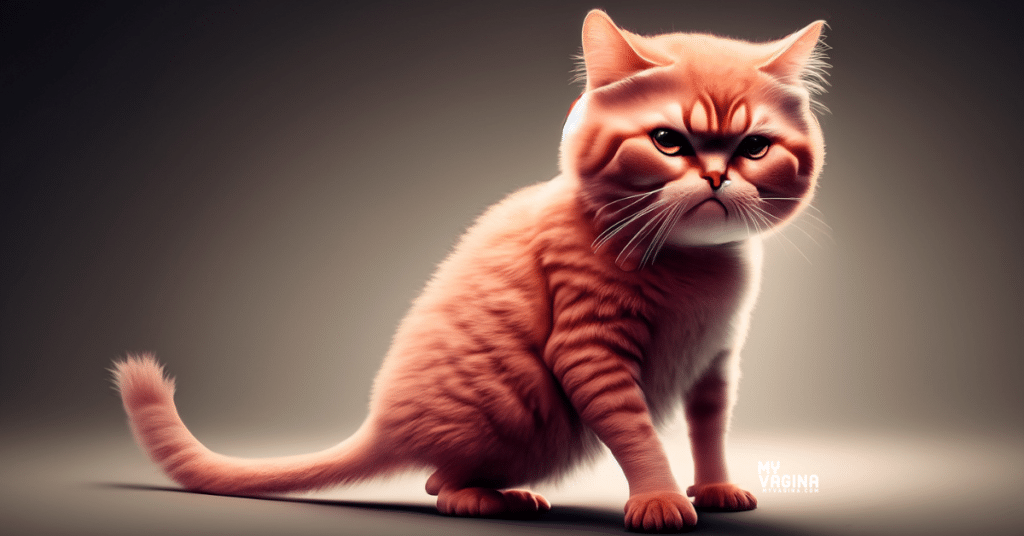Hi Aunt Vadge!
I’m hoping you can please help or reassure me about this, I’m panicking.
A month ago I was doing pelvic yoga stretches and soon after got a burning pain and swelling in my vulva and vagina plus a scary throbbing pain in my clitoris!
I took antibiotics and stuff for a yeast infection and the burning and swelling has gone away but I still have a strange scraping and shooting pain off and on on my clitoris.
What do you think this is, did I tear my clitoris exercising? Is it dry skin?
I’m so anxious and depressed, will this pain go away?
Thank you,
Panicking
Age 32, USA
____________
Hi Sabrina,
I’m genuinely sorry to hear about the distress and pain you’re experiencing. It’s clear that you’ve been through quite an ordeal with your health, and it’s absolutely understandable that you’re feeling anxious and depressed about the situation.
Regarding the pain you’re experiencing in the clitoris1,2 and vulva, it’s unlikely that you’ve caused a tear in your clitoris through exercise. The clitoris3 is quite a resilient structure, though it can become irritated or inflamed from various causes, which may be diagnosed as clitorodynia.
Considering your past issues with a clitoral adhesion4–6 and surgery for this, it’s possible that there could be some scar tissue or other adhesions that may be contributing to your pain, or that the yoga stretches have exacerbated an underlying condition.
The symptoms worsening during your period could be due to hormonal fluctuations impacting the nerves or tissues in the area – everything swells up as part of your period.
Since you’ve already had some relief with antibiotics and treatment for yeast, it’s good to hear that swelling and burning have subsided, but the remaining pain indicates that something is still not quite right.
It’s important to gently care for your vulvar and clitoral area. You might consider a topical estrogen cream if dryness is an issue, as this can help with healing and reducing discomfort. It would usually require a prescription, so discussing it with a healthcare provider would be necessary.
However, your anxiety and trauma from past gynaecologist visits are absolutely valid and must be taken into consideration.
Aunt Vadge’s Fennelope could be potential support in this context, offering gentle relief from dryness and irritation and nourishing tissue.
But remember, getting the right treatment for your current pain is crucial, and a healthcare provider can tailor this specifically for you.
Given the complexities you’re experiencing, both physically and emotionally, and the history of vaginismus7–9, seeking the help of a pelvic floor physiotherapist or an osteopath – someone who understands the structures of the pelvis in a different way to a gynaecologist – might be immensely beneficial.
You can discuss your apprehensions, and they can work with you to ensure that your experiences are as comfortable as possible. They can provide guidance on managing your clitoral pain and addressing the vaginismus in a way that honours your past traumas and anxieties.
An osteopath might be a good choice for starters, as they usually won’t do internal work, but can feel your tissue and structures with your clothes on.
But, choose carefully – you want someone experienced who you feel comfortable with, so hunt around. Getting treatment as soon as possible is very important, as ongoing pain creates its own issues that can linger. My strong recommendation is that you find an experienced practitioner to help you.
You might also like to try some gentle acupressure using your feet (you an do this, free, at home), or treatments from a trained practitioner. Reflexology, acupressure and acupuncture are known to help with pain, even if it doesn’t solve the underlying issue – some relief is better than none.
Please remember, you’re not alone, and with professional guidance and the right treatment plan, there is every reason to believe that you can find relief and rediscover pleasure.
Warmest regards,
Aunt Vadge
References
- 1.Gharahbaghian L. Clitoral priapism with no known risk factors. West J Emerg Med. 2008;9(4):235-237. https://www.ncbi.nlm.nih.gov/pubmed/19561754
- 2.Parada M, D’Amours T, Amsel R, Pink L, Gordon A, Binik YM. Clitorodynia: A Descriptive Study of Clitoral Pain. The Journal of Sexual Medicine. Published online August 1, 2015:1772-1780. doi:10.1111/jsm.12934
- 3.Puppo V. Anatomy of the Clitoris: Revision and Clarifications about the Anatomical Terms for the Clitoris Proposed (without Scientific Bases) by Helen O’Connell, Emmanuele Jannini, and Odile Buisson. ISRN Obstetrics and Gynecology. Published online September 15, 2011:1-5. doi:10.5402/2011/261464
- 4.Huseynov M, Hakalmaz AE. Labial Adhesion: New Classification and Treatment Protocol. Journal of Pediatric and Adolescent Gynecology. Published online August 2020:343-348. doi:10.1016/j.jpag.2020.03.005
- 5.Paul U, Bhattacharyya K, Paul P, Era N, Paul S. Labial adhesions: A novel therapeutic approach. Ann Med Sci Res. Published online 2022:84. doi:10.4103/amsr.amsr_32_22
- 6.Aerts L, Rubin RS, Randazzo M, Goldstein SW, Goldstein I. Retrospective Study of the Prevalence and Risk Factors of Clitoral Adhesions: Women’s Health Providers Should Routinely Examine the Glans Clitoris. Sexual Medicine. Published online March 17, 2018:115-122. doi:10.1016/j.esxm.2018.01.003
- 7.Harish T, Muliyala K, Murthy P. Successful management of vaginismus: An eclectic approach. Indian J Psychiatry. Published online 2011:154. doi:10.4103/0019-5545.82548
- 8.McEvoy M, McElvaney R, Glover R. Understanding vaginismus: a biopsychosocial perspective. Sexual and Relationship Therapy. Published online December 5, 2021:1-22. doi:10.1080/14681994.2021.2007233
- 9.Lahaie MA, Boyer SC, Amsel R, Khalifé S, Binik YM. Vaginismus: A Review of the Literature on the Classification/Diagnosis, Etiology and Treatment. Womens Health (Lond Engl). Published online September 2010:705-719. doi:10.2217/whe.10.46

Get a fresh perspective with a qualified, experienced vulvovaginal specialist naturopath.
This product has multiple variants. The options may be chosen on the product page
The most comprehensive vaginal microbiome test you can take at home, brought to you by world-leading vaginal microbiome scientists at Juno Bio.

Promote and support a protective vaginal microbiome with tailored probiotic species.







